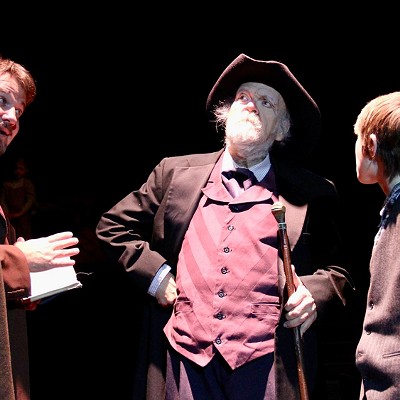“We were not allowed to sit with our classmates,” Fisher said in an interview recorded before her death in 1995 at the age of 71.
“They moved all the white students to the first three rows. They left three or four blank rows. Then behind that last row, a large wooden chair with a big pole and ‘colored’ written on it.”
As the first African-American to break the color barrier at the University of Oklahoma’s College of Law, Fisher was an early key player in Oklahoma’s civil rights movement. This year marks the 60th anniversary of her graduation from the law school.
right Ada Lois Sipuel Fisher
The National Association for the Advancement of Colored People encouraged Fisher to fight Oklahoma’s segregation laws in institutions of higher education in the 1940s. The state tried every method possible to keep her out of OU, even opening a Langston University School of Law at the state Capitol for the sole purpose of serving her.
But three years, multiple injustices and a U.S. Supreme Court ruling changed the course of Fisher’s life and generations of black students after her.
“As I often say when I’m talking to a group,” Fisher later said, “The Sipuel decision was not a decision for Ada Lois, it was a decision for America.”
Trial and tribulation
Bruce Fisher said he had no idea growing up what a hero he had in his midst.
He recalled his senior year at Northeast High School when he and several other students were planning what turned out to be the first black history program at the school. Then-Vice Principal Melvin Todd told them they needed a speaker.
“He looked at me, and I said, ‘I didn’t know anyone like that,’” Fisher said. “He laughed.”
Bruce Fisher said Todd and others had to tell him about the pivotal role his mother played in desegregation, as she was always focused on the contributions of others, such as Thurgood Marshall, her attorney and later the first black U.S. Supreme Court justice.
Oklahoma City attorney Melvin Hall studied under Sipuel Fisher at Langston University in the 1970s. Later as an OU law student, he helped honor her as a member of the Black Law Student Association.
Hall said many people don’t know it was the Sipuel case and a separate case by another black OU applicant, George McLaurin, that laid the foundation for the Brown v. Board of Education Supreme Court decision that ultimately ended segregation in public schools.
“She made it possible for me to become a lawyer,” Hall said. “You can’t get any more impactful than that. Through her courageous efforts, she kicked down the doors of segregation.”
Courting tactics
Former OU President George Lynn Cross, in an interview before his death in 1998, spoke about his role in Fisher’s court cases and eventual admittance and graduation from OU’s College of Law.
He said when he was first approached by Fisher — accompanied by Roscoe Dunjee, editor of The Black Dispatch newspaper; and W.A.J. Bullock, the regional director of the NAACP — he tried to explain the state’s segregation laws. As president of the university, Cross recalled telling the pair he could be fined $500 a day for allowing a black student to attend the white university. He added that instructors could be fined $100 a day for teaching a mixed class, and students could be fined $25 a day just for attending.
“I can still see Roscoe Dunjee leaning back in the chair with a look of amusement in his eyes and a slight smile on his face,” Cross said. “He said, ‘Dr. Cross, we’re familiar with these laws. We’ve studied them a lot more than you have.’”
Dunjee explained they knew Cross couldn’t admit Fisher to the university. They simply wanted him to draft a letter saying the straight-A Langston University graduate was qualified for acceptance. That would buy their ticket into the courts.
Cross did so. Later, he would abide by what he called the state’s “preposterous” separate-but-equal laws that allowed Fisher and other black students into OU but demanded they be taught in separate rooms from white students with separate bathrooms and separate tables in the cafeteria and the library.
Cross and university faculty flouted the spirit of the law by dividing classrooms with rope and designating them classrooms “A” and “B.” Of course, if they were in separate classrooms, the one instructor became two, the faculty reasoned.
Cross and Fisher said it was the white students who were constantly breaking the color barriers, crawling under the ropes, sharing notes and conversations with their brave peer.
Fisher recalled the Monday after the Supreme Court’s final ruling in the McLaurin case that ended the separate-but-equal laws in the state’s higher learning institutions.
“I came to school that Monday and there wasn’t a (‘colored’) sign in sight,” she said. “So I moved right down to the front row, right directly in front of the instructor, and I haven’t sat in the back row since.”
Decades later, Fisher took a seat of a different kind, when then-Gov. David Walters appointed her to the OU Board of Regents.











